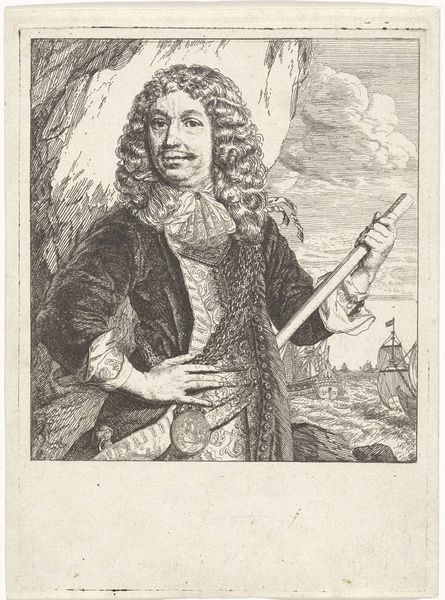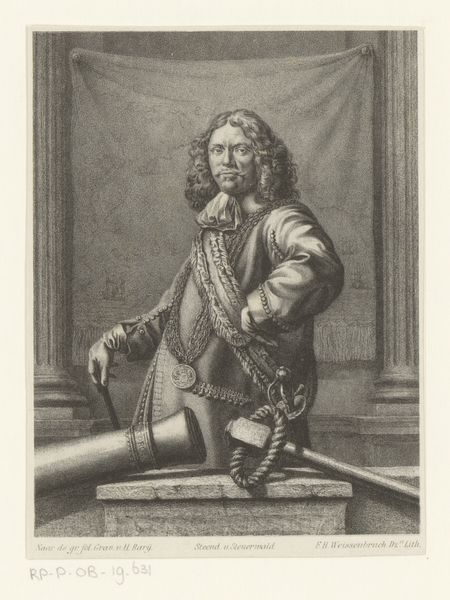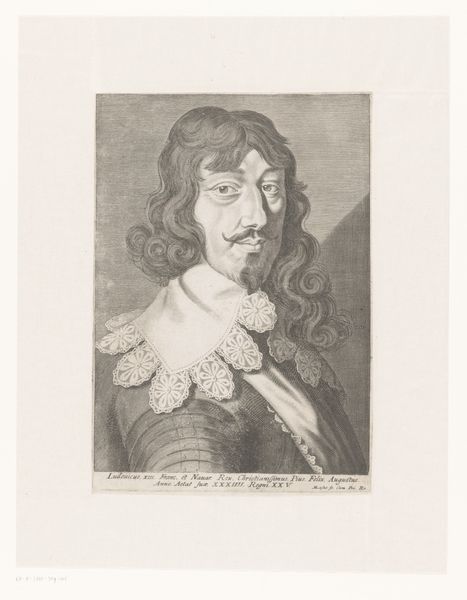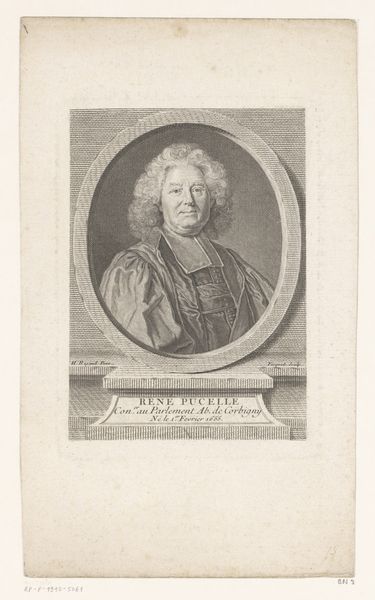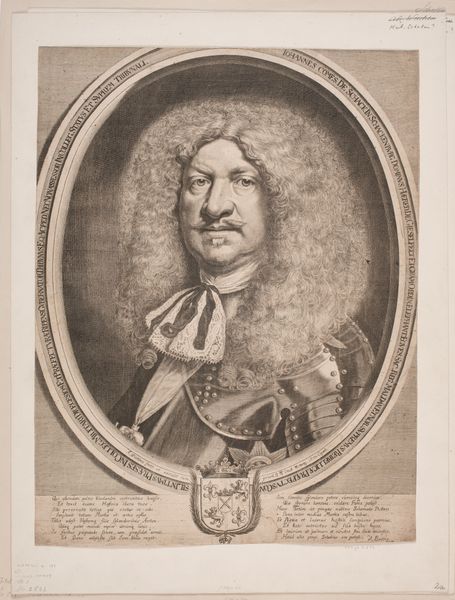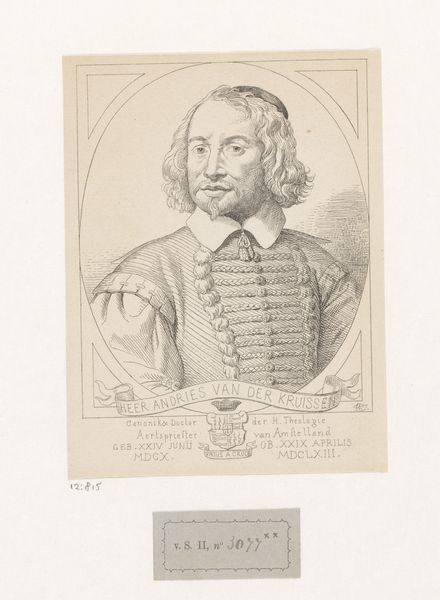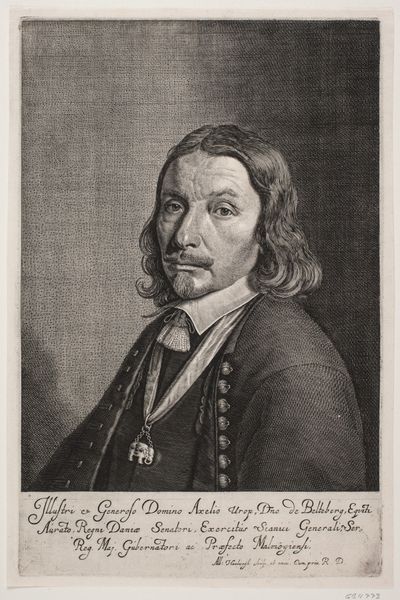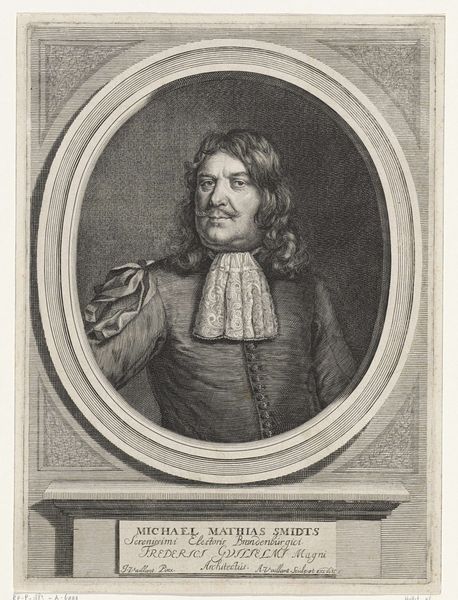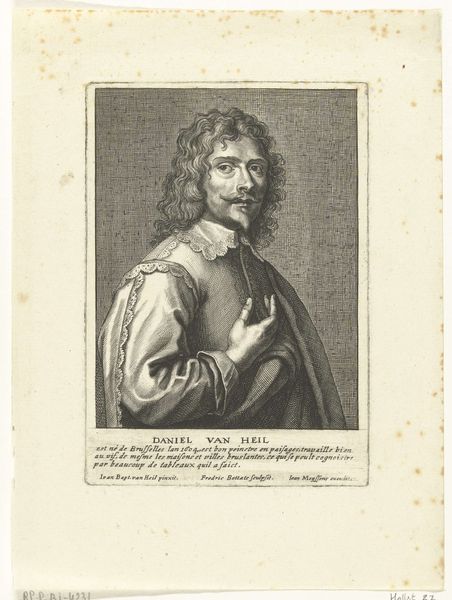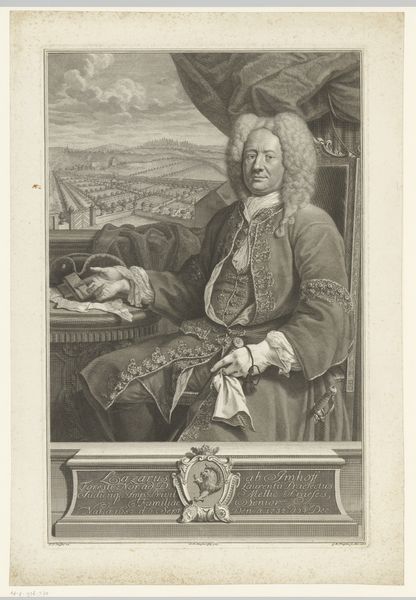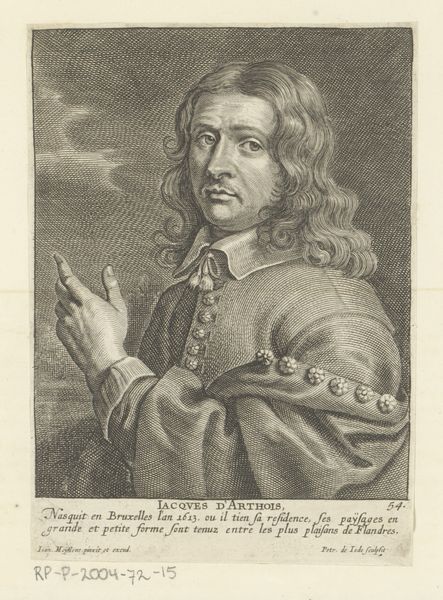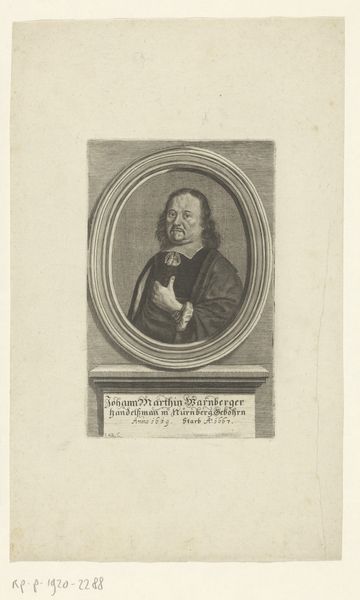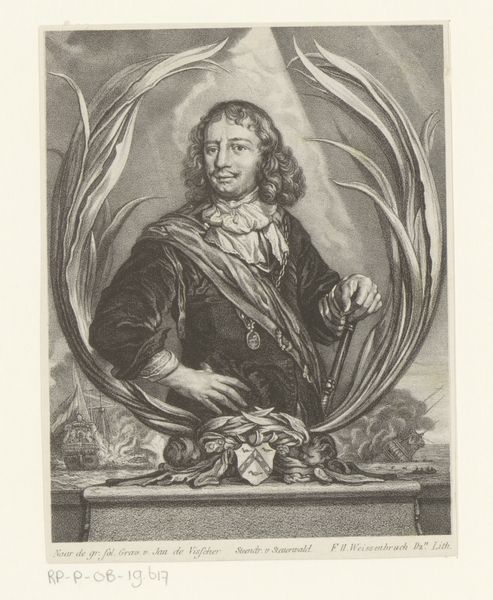
Dimensions: height 125 mm, width 108 mm
Copyright: Rijks Museum: Open Domain
This is Frederik Hendrik Weissenbruch's "Portret van Jan van Galen," made as a lithograph. The lithograph is a fascinating medium, because it walks a line between mechanical reproduction and the direct touch of the artist. In this case, the composition was drawn on a flat stone with a greasy crayon. The stone was then treated with chemicals so that ink would adhere only to the drawn areas. Paper is then pressed onto the stone to transfer the image. Here, the lithographic process allows Weissenbruch to render the textures of Jan van Galen's clothing and hair with remarkable fidelity, from the gleaming metal of his armor to the soft fabric of his sleeves. The evenness of tone achieved through lithography also emphasizes van Galen's composed expression. The image conveys a sense of authority and control. In the end, by understanding the materiality and method behind this image, we can truly appreciate the artistic decisions that went into its creation. It prompts us to consider the value of prints, and the many ways in which artists can combine handcraft and industry.
Comments
No comments
Be the first to comment and join the conversation on the ultimate creative platform.
